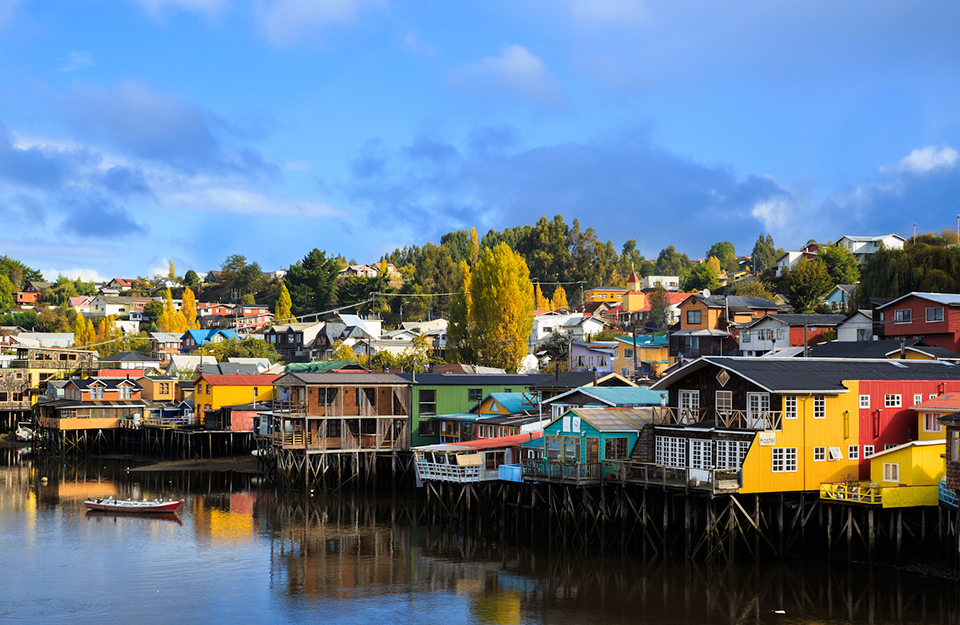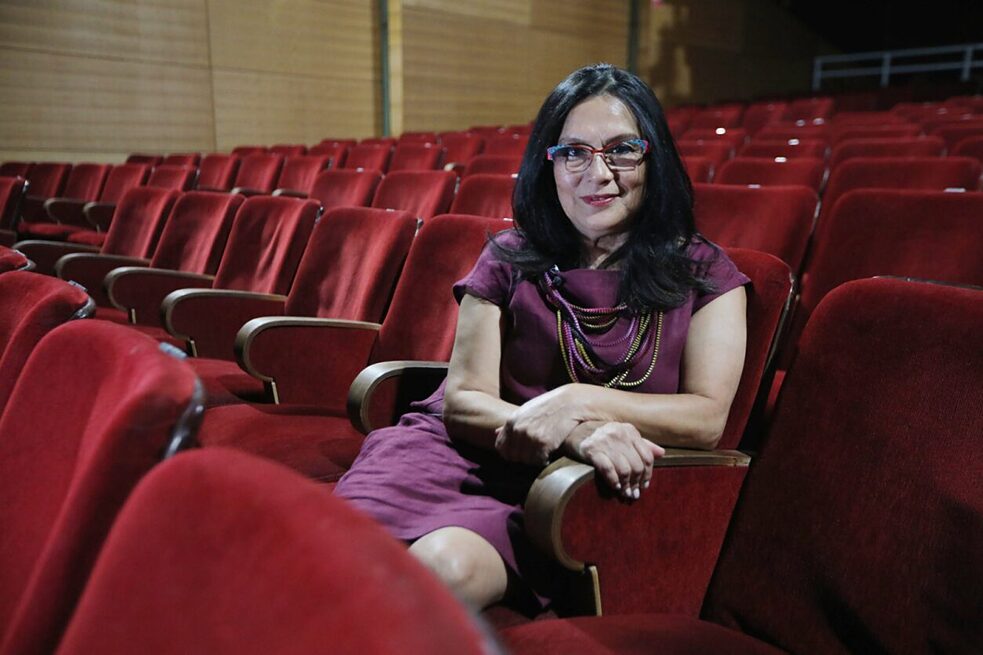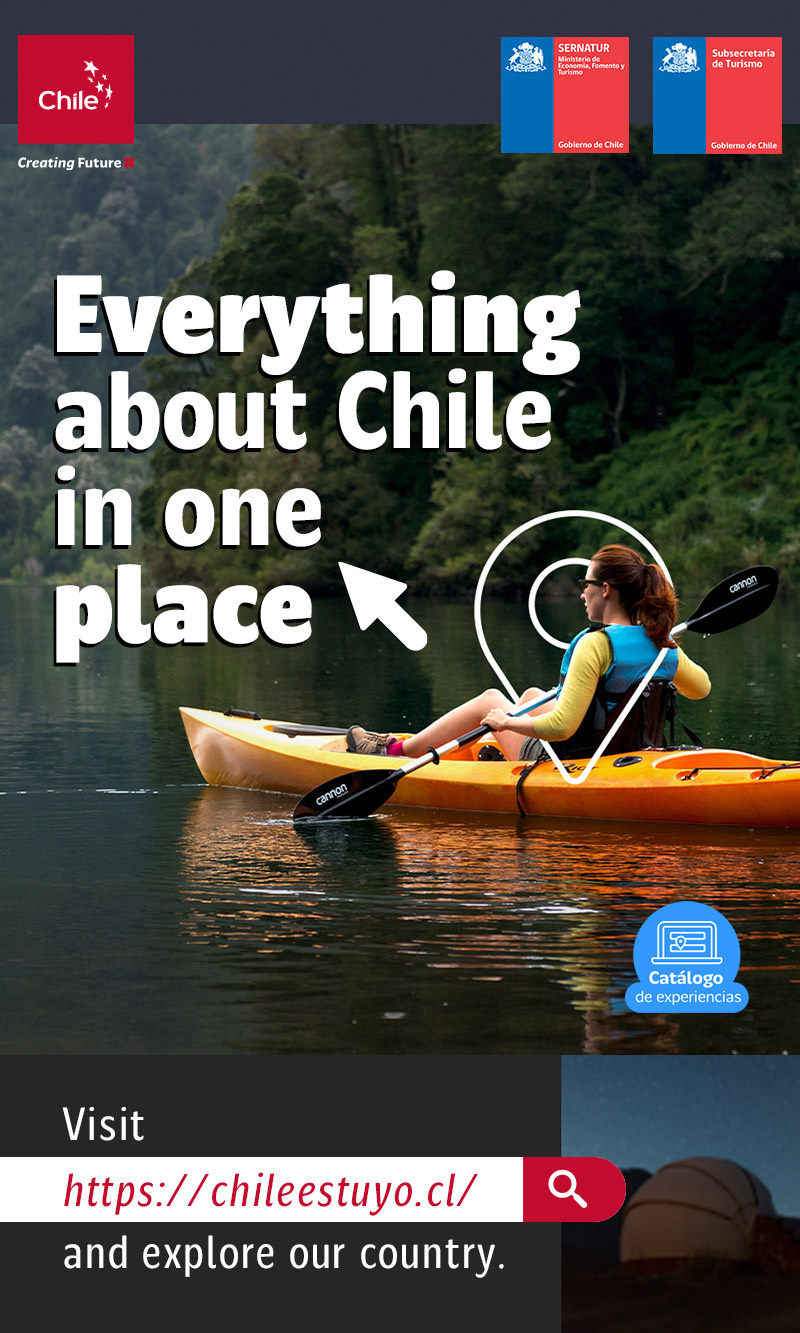
In this context, Francisco Godoy, architect and master's degree in sustainable and environmental design from the Architectural Association of London, reflects on the importance of highlighting the identity of Chilean architecture and the great challenge for today's architects to value it in contemporary constructions.
"We live in a country that is tremendously diverse in terms of climate. We have 6,500 kilometers of coastline - we go from latitude 18 to 50 or so - so we have to respond to architectural or building design commissions in different ways," says Godoy.
In addition, he explains that bioclimatic or vernacular architecture, which is made by people who were confronted with a particular climate and began to build from there, has forged in some way the architecture in Chile throughout its history and territory and that is something that is not only important to recognize, but also to preserve and continue to apply in current times.
"The diversity of Chile's landscape and climate results in a lot of architectural typologies that are very interesting," says the professional, who mentions some examples of traditional constructions from the north, center and south of the country that show the richness and identity based on vernacular architecture.
Tulor Village, San Pedro de Atacama

"If you think of the Atacameños in northern Chile or look at the village of Tulor, which is a housing structure made of stone and mud with roofs made of thatch and mud, in San Pedro de Atacama, it makes perfect sense for that specific climate," the architect points out about this housing construction in the north of the country, which is also one of the oldest sedentary archaeological sites in Chile.
Pucará de Quitor is another structure in San Pedro de Atacama, which despite being a pre-Columbian fortress and not a residential construction, reflects how "the architectural design was totally linked to the geography of the place and with materials available in the area". In this way, the architect indicates how identity was built with an aesthetic rooted in each place and at the same time "100% climatically adapted".
Traditional Chilean house, central valley
In Chile's central valley, other architectural typologies appear, says Godoy, who highlights the traditional Chilean house, "made of adobe with muslera tile", which arrived from Spain to our country at the time of the Conquest, being adapted to local conditions. "The Aragonese house, which is the original house brought by the Spaniard, was a three-story house with a very small central patio in order to reduce the impact of the sun, and since in Chile we are a telluric country, the Chilean adaptation is extended to a single floor with a larger central patio," says Francisco Godoy, highlighting how the traditional Chilean house was built based on adaptations of the Aragonese house.
The architect also highlights the functionalities of adobe, a material with a high thermal mass that is capable of receiving a lot of sun and keeping cool. Thanks to it, traditional houses are cool in summer and at the same time warm in winter: "All the heat that is absorbed in the material is then returned to the environment when the temperature drops," he explains. The traditional Chilean house has another series of architectural strategies, such as eaves to protect from the sun, the use of pools as a natural cooling system or palm trees to provide shade in the central courtyard.
Ruca Mapuche, Central Valley and Araucania
Francisco Godoy is also a university professor of sustainable architecture. Thus, he says that every year he makes his students visit a Mapuche ruca because it has important design decisions to observe: "Its structure is made of wood because it was the largest material available to the Mapuches and it is completely covered by a thick totora, which is straw on the outside but inside is composed of very thin filaments filled with air, which works as an excellent insulator".
In addition, the academic comments that one of the most interesting strategies of the ruca is that its interior open space has a fire in the center, with a very advanced ventilation system, which "despite the fact that the fire is lit all day because of its tradition, the air is always clean and the space is completely ventilated".
Palafitos, Chiloé
The palafitos are based on wood architecture. Godoy explains that just like human beings, who when in a very cold and windy place tend to get close and cling to each other to provide warmth, the palafitte occupies the same strategy. "They are compact houses of limited space and surface, which together with others in a continuum, take advantage of the temperature that each one of them generates, thus functioning as a system," the architect explains.
As an island, Chiloé also has a tradition and identity that is strongly marked in its architecture: "For the Chilote it is always present that he inhabits this space between the land and the sea," says Godoy.
The architect highlights Edward Rojas, National Architecture Prize in 2016, who has worked all his life on wood construction in Chiloé, giving value to local architecture, and adds that "there are more examples of young architects who today rescue this tradition, recover palafittes and give new value to this architecture".
The challenge for new generations of Chilean architects
Faced with the current challenge for Chilean architects, Godoy says it is essential to "rescue those languages and identity of Chilean architecture, of earth, adobe, wood," present in so many of the country's traditional constructions. "It is a work that we have to do. We have to transmit this message to students in universities," says the architect. "I believe that all architects and designers can recover this identity, applying it day by day in our designs".
Finally, Godoy affirms that our traditional architecture generates a lot of interest internationally: "When you talk to a foreigner about the traditional country house, the palafito, etc., it really catches their attention and is very attractive". The architect concludes with the importance of "understanding, being proud of what we have built and then going out to show the world what we have" and continuing to be inspired by our own Chilean roots.






